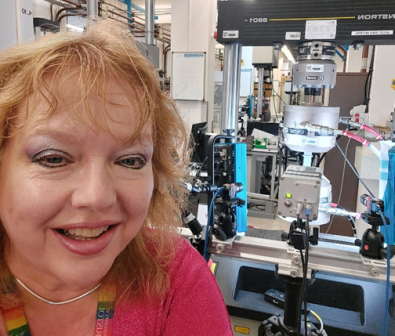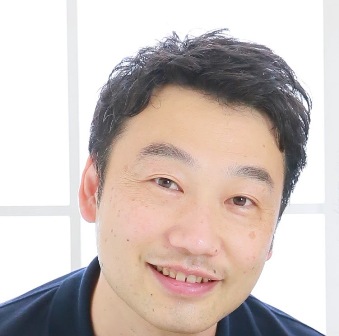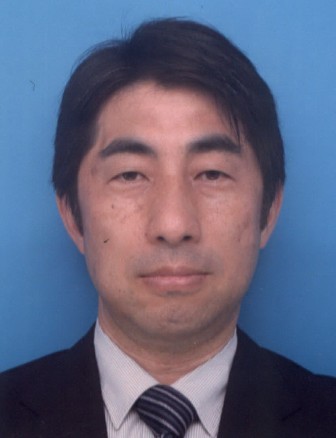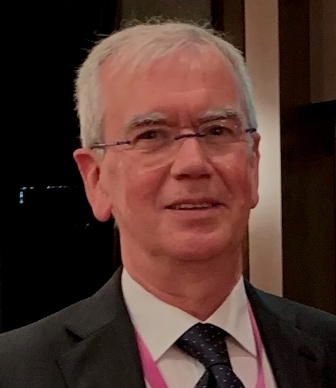Plenary Lecture
Plenary Lecture 1
Using Infra-red Thermography to Identify Thermomechanical Heat Sources to Support Material Characterisations
Prof. Janice Dulieu-Barton
University of Bristol, UK
Mechanical deformation of a material is accompanied by a change in temperature caused by both thermoelastic and dissipative effects known as
'thermomechanical heat sources'. The temperature change in a material caused by the thermoelastic effect under reversable and adiabatic conditions
is the basis for a technique known as Thermoelastic Stress Analysis (TSA). The temperature rise in the material as a consequence of the dissipation
is mainly due to the movement of dislocations. The heat is transferred by conduction, convection, and radiation to its surroundings, which means that
any temperature change cannot be considered as intrinsic material behaviour. In contrast, the thermoelastic and dissipative heat sources are
intrinsic to the material. Hence in the presentation the challenge of extracting the small temperature changes associated with the heat sources using
infra-red imaging will be addressed. It is demonstrated that these small temperature that can be obtained using an infrared camera and related to material characteristics.
TSA is well established as a technique for obtain stress metrics from materials. In the presentation, the focus is on Carbon Fibre Reinforced
Polymers (CFRP), where due to the material construction the small temperature change does not occur under adiabatic conditions and hence the
technique no longer provides a simple stress metric. Instead the non-adiabatic thermoelastic response is used to extract the coefficients of thermal
expansion (CTE) for the material. CTE is a difficult parameter to measure using traditional approaches, evidenced by an extensive survey of the
literature focusing on the well-documented materials. A new tool is proposed to enable rapid and accurate predictions of CTE based on full-field data
fusion (FFDF) based on combining Thermoelastic Stress Analysis (TSA) and Digital Image Correlation (DIC). Use is made of both the non-adiabatic and
adiabatic thermoelastic response to identify the CTEs.
The presentation also describes how the dissipative heat source is extracted from a region containing a laser weld in a stainless steel specimen
subjected to elastic cyclic loading. The heat source is used to assess the heterogeneity in the microstructure. The data processing and experimental
procedures allowed the very small temperature changes to be established is described. In particular an image processing procedure that includes
temporally and spatially resolving the heat sources is used in the vicinity of the weld. It is demonstrated that the different microstructures
occuring as a result of the welding processes result in a varying dissipation dependent on the weld microstructure.
A comprehensive account of the ways that infra-red imaging can be used to support material characterisation is provided. The presentation covers
aspects such as specimen preparation, equipment type and set-up, image processing and data fusion to support thermomechanical materials characterisations.
Plenary Lecture 2
Medical applications of infrared spectroscopy and wavelength dependent optical sensors towards on-chip spectroscopy
Prof. Koji Sugano
Kobe University, JAPAN
Infrared spectroscopy is a versatile analytical tool that has found extensive use in various fields, such as the quality assessment of crops, food,
and medicines. Despite its many advantages, infrared spectroscopy is limited in its industrial applications due to the high cost and large size of
the required spectroscopic instruments and photodetectors. However, advancements in on-chip spectrometer technology will lead to the development of
compact and low-cost devices that open up new possibilities for infrared spectroscopy.
In this talk, I will provide an overview of medical applications of infrared spectroscopy and a novel on-chip spectroscopy device that has been
designed to operate in the short-wavelength infrared (SWIR) range. This device utilizes a mechanical resonator-based photodetector that incorporates
microelectromechanical system (MEMS) technology. The photodetector has been integrated with wavelength-dependent plasmonic optical absorbers to
detect a specific wavelength band in the SWIR range. An array of detectors with different absorption wavelengths enables the device to perform
spectroscopic analysis. In this presentation, I will discuss the principle, structure, experimental results, and potential applications of this device.
Plenary Lecture 3
Polarization Techniques for Infrared Thermography
Prof. Nagahisa Ogasawara
National Defense Academy, JAPAN
The polarization characteristic of an infrared ray is expressed theoretically with Maxwell's electromagnetic equations. Thus, we will
introduce three polarization techniques that may effectively work for infrared thermographic testing. They are independent of each other and
can be applied separately.
The first is a method for measuring emissivity, a crucial property in quantitative thermography. Insulators have
the Brewster angle where the reflectivity is 0. The methods measure the energy distribution around the Brewster angle and then can identify
the emissivity based on the angle dependency. We will also show a simple technique using only sky radiation.
The second is a method to
subject heat energy efficiently to metals for active thermography. Metals have very small emissivity, but a large face angle increases the
emissivity, especially for the P-polarized emissivity. Therefore, an expanded laser beam can work as an efficient heater. We will show an
application for a non-destructive inspection of polished stainless steel.
The final is a method for removing background reflection. The
equation of polarization theory can separate infrared energy into radiated and reflected components and obtain the thermal image without
reflection energy. This method can work effectively even if the reflection overlaps with the radiation part.
Plenary Lecture 4
On measuring in-plane thermal conductivity of a metallic thin film by photothermal techniques
Dr. Paolo Bison
the Istituto per le Tecnologie della Costruzione of the Consiglio Nazionale delle Ricerche, Italy
Some analytical solutions of the heat conduction differential equation in 2D case are reviewed in order to apply them to a film, with
thickness so small that the temperature variation over it is negligible. The models are successively applied to interpret the data coming
from photothermal experiments.
A laser source is used, with both pulsed and periodic time dependence to heat the film. Moreover, the energy,
released on the surface of the film, is provided both with spatially focused, periodic and random distributions. An IR camera collects a
sequence of temperature fields of the film surface.
Data reduction is applied to extract the thermal diffusivity parameter. Specific heat and
density are measured as well, and the thermal conductivity is finally obtained. The effectiveness of the various techniques is evaluated in
terms of the measurements uncertainty.
The measurement is carried out on metallic foils, obtained by cold lamination. The increase of thermal
conductivity, due to this particular industrial process, can be very high in comparison with that of the bulk material. Such an increase is
combined with the electrical conductivity increase, and interpreted by means of the Wiedeman-Franz law.




